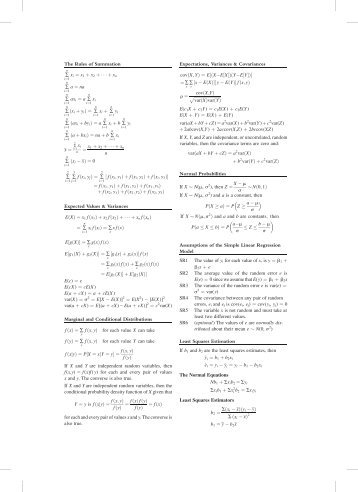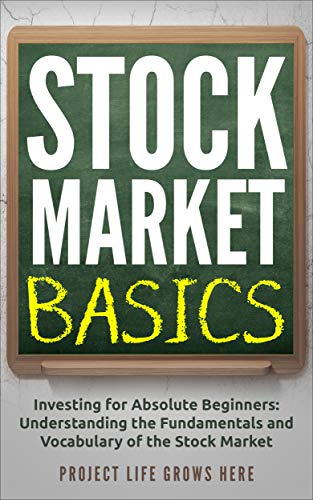Creation of the Bretton Woods System
Contents:
The economic growths and stability of the era were so impressive that there have been numerous talks for the return of the system. Because the United States was the world’s largest economy at the time, and the main prospective source of funds for the IMF and IBRD, the U.S. delegation had the largest influence on the proposals agreed to at Bretton Woods. Although a compromise was reached on some points, because of the overwhelming economic and military power of the United States the participants at Bretton Woods largely agreed on White’s plan. White’s plan was designed not merely to secure the rise and world economic domination of the United States, but to ensure that as the outgoing superpower Britain would be shuffled even further from centre stage. Although attended by 44 nations, discussions at the conference were dominated by two rival plans developed by the United States and Britain.

The Federal Reserve was concerned about an increase in the domestic unemployment rate due to the devaluation of the dollar. In attempt to undermine the efforts of the Smithsonian Agreement, the Federal Reserve lowered interest rates in pursuit of a previously established domestic policy objective of full national employment. With the Smithsonian Agreement, member countries anticipated a return flow of dollars to the U.S, but the reduced interest rates within the United States caused dollars to continue to flow out of the U.S. and into foreign central banks.
Replacing the Gold Standard
United States allies—economically exhausted by the war—needed U.S. assistance to rebuild their domestic production and to finance their international trade; indeed, they needed it to survive. As mentioned above, 44 allied nations met in Bretton Woods, NH in 1944 for the United Nations Monetary and Financial Conference. At that time, the world economy was very shaky, and the allied nations sought to meet to discuss and find a solution for the prevailing issues that plagued currency exchange. In 1971, concerned that the U.S. gold supply was no longer adequate to cover the number of dollars in circulation, President Richard M. Nixon devalued the U.S. dollar relative to gold. After a run on gold reserve, he declared a temporary suspension of the dollar’s convertibility into gold. These countries were brought together to help regulate and promote international trade across borders.
Robert Kelly is managing director of XTS Energy LLC, and has more than three decades of experience as a business executive. He is a professor of economics and has raised more than $4.5 billion in investment capital. This information is educational, and is not an offer to sell or a solicitation of an offer to buy any security. This information is not a recommendation to buy, hold, or sell an investment or financial product, or take any action. This information is neither individualized nor a research report, and must not serve as the basis for any investment decision.
In the past this problem had been solved through the gold standard, but the architects of Bretton Woods did not consider this option feasible for the postwar political economy. Instead, they set up a system of fixed exchange rates managed by a series of newly created international institutions using the U.S. dollar as a reserve currency. It was clear during the Second World War that a new international system would be needed to replace the Gold Standard after the war ended. The design for it was drawn up at the Bretton Woods Conference in the US in 1944. US political and economic dominance necessitated the dollar being at the centre of the system. After the chaos of the inter-war period there was a desire for stability, with fixed exchange rates seen as essential for trade, but also for more flexibility than the traditional Gold Standard had provided.
Second, the IMF offers loans to nations that need help stabilizing their currencies, paying for imports, or otherwise encouraging growth. The agreement limited how much the value of a currency could change, forcing it to stay within a small band. Someone who had four British pounds knew that those pounds were worth about one dollar. Forty-four countries sent delegations to the Bretton Woods conference to negotiate the Bretton Woods System. De-dollarization is the movement to reduce other countries’ reliance on the dollar – often with the goal of undermining the US.
- This is why being able to understand the foreign exchange market makes it much easier to transfer funds internationally, which can be sensitive to price changes.
- And what we find is that if there hadn’t been these capital controls or if it hadn’t been for Bretton Woods, then sure enough, Europe would have received much more capital inflows and, as such, would have been able to reconstruct much faster.
- Our mission is to demonstrate the value of multilateralism and improve the performance and capacity of the international financial institutions through public dialogue, advocacy, and policy analysis.
- That meant each country guaranteed that it would redeem its currency for its value in gold.
As with the benefits of all currency pegging regimes, currency pegs are expected to provide currency stabilization for trade of goods and services as well as financing. Under the Bretton Woods System, gold was the basis for the U.S. dollar and other currencies were pegged to the U.S. dollar’s value. The Bretton Woods System effectively came to an end in the early 1970s when President Richard M. Nixon announced that the U.S. would no longer exchange gold for U.S. currency. Individuals who wish to gain a wide range of hands-on experience and learn about the inner workings of a small non-profit and the individuals and organizations shaping the future of the international financial institutions are encouraged to apply.
Treasury in 1942–44, Harry Dexter White drafted the U.S. blueprint for international access to liquidity, which competed with the plan drafted for the British Treasury by Keynes. Overall, White’s scheme tended to favor incentives designed to create price stability within the world’s economies, while Keynes wanted a system that encouraged economic growth. The “collective agreement was an enormous international undertaking” that took two years prior to the conference to prepare for. It consisted of numerous bilateral and multilateral meetings to reach common ground on what policies would make up the Bretton Woods system. Imbalances in international trade were theoretically rectified automatically by the gold standard. A country with a deficit would have depleted gold reserves and would thus have to reduce its money supply.
The Bretton Woods System, therefore, minimized international currency exchange rate volatility which helped international trade relations. More stability in foreign currency exchange was also a factor for the successful support of loans and grants internationally from the World Bank. Those at Bretton Woods envisioned an international monetary system that would ensure exchange rate stability, prevent competitive devaluations, and promote economic growth. Although all participants agreed on the goals of the new system, plans to implement them differed. Preparation began more than two years before the conference, and financial experts held countless bilateral and multilateral meetings to arrive at a common approach. The agreement failed to encourage discipline by the Federal Reserve or the United States government.
Another reason for the collapse of the system was that since the design of the system was hinged on the military, the political and economic strength of the US, it meant that the US carried all the burden of the system. Dollars what is meant by bretton woods agreement convertibility into gold was suspended and by 1973 it was clear the Bretton Woods system has already collapsed. The second financial institution that was created as a result of the Bretton Woods Agreement was the World Bank.
Paralysis of international monetary management
In the case of balance of payments imbalances, Keynes recommended that both debtors and creditors should change their policies. As outlined by Keynes, countries with payment surpluses should increase their imports from the deficit countries, build factories in debtor nations, or donate to them—and thereby create a foreign trade equilibrium. Thus, Keynes was sensitive to the problem that placing too much of the burden on the deficit country would be deflationary. On a larger scale, however, the agreement unified 44 nations from around the world, bringing them together to solve a growing global financial crisis.
Under the Bretton Woods System, every currency involved in the agreement had a known value in U.S. dollars or gold. Any person could convert their foreign currency to dollars, and anyone holding dollars could turn their dollars into gold. According to the agreement, the value of the dollar was set at 1/35th of an ounce of gold. Holders of British pounds could convert them to dollars at a rate of $4.03 to the pound. This made it easy for any person to know what their money was worth compared to other currencies in the agreement.

The Kennedy administration drafted a radical change of the tax system to spur more production capacity and thus encourage exports. This culminated with the 1963 tax cut program, designed to maintain the $35 peg. In the event of structural disequilibria, it expected that there would be national solutions, for example, an adjustment in the value of the currency or an improvement by other means of a country’s competitive position. The IMF was left with few means, however, to encourage such national solutions. Never before had international monetary cooperation been attempted on a permanent institutional basis. Even more groundbreaking was the decision to allocate voting rights among governments, not on a one-state one-vote basis, but rather in proportion to quotas.
World Gold Council
Another objective of the agreement was the avoidance of any form of a trade war. The major objective and primary focus of the agreement was to introduce a currency system which was https://1investing.in/ not as rigid as the gold standard but was as stable as the Gold standard. The Bretton Woods Agreement was made to create an international framework which had many objectives.
Commission II dealt with the IBRD and was chaired by John Maynard Keynes, economic adviser to the British Chancellor of the Exchequer and the chief British negotiator at the conference. Commission III dealt with “other means of international financial cooperation” and was chaired by Eduardo Suárez, Mexico’s Minister of Finance and the leader of the Mexican delegation. It was a venue for ideas that did not fall under the other two commissions.

The Bretton Woods Agreement was a 1944 meeting of the Allied nations, in which the nations agreed to peg their currencies to the dollar while the dollar was pegged to gold. Today, many nations allow the value of their currency to float freely in comparison to other currencies. Other governments peg their currency’s value to a reserve currency such as the U.S. dollar or the Euro or the value of a basket of multiple currencies. One of the primary features of the Bretton Woods System was a set conversion between currencies and the U.S. dollar and the U.S. dollar and gold. Those who held other currencies covered by the agreement always knew how many dollars they could receive for their British pounds or French francs. In contrast, by 1947, European nations were suffering from chronic balance-of-payments deficits, resulting in the rapid depletion of their dollar and gold reserves.
What is meant by the Bretton Woods Agreement?
If anything, Bretton Woods was a return to a time devoid of increased governmental intervention in economies and currency systems. A floating exchange rate is a regime where a nation’s currency is set by the forex market through supply and demand. The currency rises or falls freely, and is not significantly manipulated by the nation’s government.
Well, it seems like they did, because if their job was to control speculative capital flows, and we know that there were no capital flows during these two decades. Well, to that extent, it seems like they clearly controlled speculative capital flows. I think that the IMF has now transformed into a “lender of last resort.” The IMF is basically the entity that rescues any country from default situations. But, if anything, I do think that we see that we haven’t gained in the past anything by having capital controls.

Leave a Reply
Want to join the discussion?Feel free to contribute!